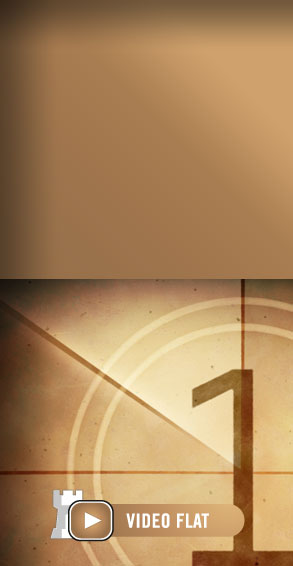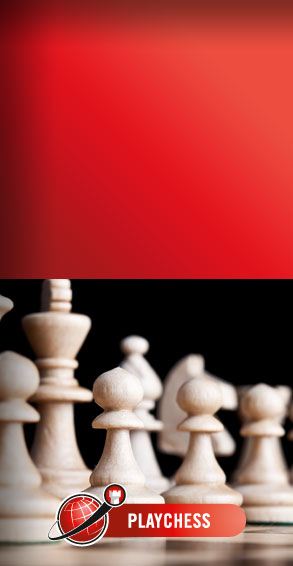A tourist attraction year around
It had been over 20 years since I played an open tournament in Europe, and boy, did I choose the right place for a comeback!
The Capital of the Alps, main city in Tyrol in western Austria, Innsbruck is a place of rich history and unparalleled beauty. Innsbruck is known for winter sports, and has hosted two Winter Olympic Games, one in 1964 and the other in 1976, not to mention numerous Alpine skiing events. The river Inn curls through the city, offering a nice walk along its banks, always with a view of mountains that encircle the city on three sides, West, North and South.

The Inn is a river in Switzerland, Austria and Germany and is a right tributary to the Danube | Photo: A. Yermolinsky
Being a tourist attraction year around, Innsbruck takes good care of its historical buildings and bridges.

Innsbruck is full of historic buildings deserving of a visit | Photo: A. Yermolinsky

Visitors from neighboring Germany, GMs Luther and Teske, prefer a pedestrian bridge | Photo: A. Yermolinsky
Thomas Luther is an old friend of mine, and he was the one who told me about the tournament and made this whole trip possible for me. Thank you, Thomas!
I made a lot of new friends in Innsbruck, but none more important than the man behind the whole concept of the event, the tournament director Giorgio Gugler. Giorgio is a real bundle of energy, nothing is impossible for this guy.

Tournament director Giorgio Gugler (in white) giving out the prizes | Photo: A. Yermolinsky
Here he is welcoming one of the youngest prize winners (sorry, I missed your name as it was announced) at the closing ceremony.

Chief Arbiter IA Gerhard Bertagnolli impressed by greeting the players in three languages before every round | Photo: A. Yermolinsky
The tournament site was the Sillpark shopping mall. We actually played in one of the conference rooms upstairs that, unfortunately, proved to be a bit too small for 112 participants across two sections. Both the opening and closing ceremonies were held right in the mall and attracted a lot of spectators.
The deliciously slow pace of the tournament, offering a free day at the expense of only one day when two rounds were played, was especially welcomed by yours truly. Feeling a bit worn out by the busy traveling schedule of July and August, I enjoyed every hour away from the chess board. On the rest day we took a cable car ride to the top of the world.

Alex Yermolinsky and TD Giorgio Gugler on top of the world | Photo: Giorgio Gugler
What could be a more visible place to advertise a chess tournament?

The lush green forests in the summer, hidden by snow in the winter, are a sight to behold | Photo: A. Yermolinsky
Walking in the forest along the Southern range was good exercise. For the chess itself, I tried to play interesting games, but the tank was about empty. As the reader can see from the following games, I failed to find good moves at critical moments.

[Event "Innsbruck Open"] [Site "Innsbruck AUT"] [Date "2017.08.29"] [Round "5"] [White "Gholami, Aryan"] [Black "Yermolinsky, Alex"] [Result "1/2-1/2"] [ECO "B50"] [WhiteElo "2434"] [BlackElo "2488"] [Annotator "Yermo"] [PlyCount "126"] [EventDate "2017.??.??"] [EventType "swiss"] 1. e4 c5 2. Nf3 d6 3. c3 Nf6 4. Be2 Nbd7 5. Qc2 $6 {The young Iranian player surprised me with this choice.} ({I expected} 5. d3 b6 6. O-O Bb7 7. Nbd2 { and here I was going to play} e6 ({avoiding} 7... g6 8. d4 $5 {as in the famous game Svidler-Kasparov, Tilburg 1997.})) 5... Qc7 6. O-O e6 {going for Scheveningen structures.} ({According to databases} 6... g6 {is more popular, but I guess it is largely a matter of choice.}) 7. c4 $5 (7. a4 b6 8. a5 Bb7 9. d3 bxa5 $6 10. Qa4 c4 {was seen in Rozentalis-Jones, Gausdal 2007. I can't say I'm thrilled with Black's ideas.}) 7... Be7 8. Nc3 a6 9. b3 b6 10. Bb2 O-O 11. Rfe1 Bb7 12. d4 cxd4 13. Nxd4 {OK, what we have here is a standard Hedhehog with a couple of extra tempi for Black, which is rather unimportant.} Rac8 14. Bf1 Rfe8 15. Rac1 Qb8 16. Qd2 Nc5 $5 {The typical breaks b6-b5 and d6-d5 are ineffective, it not outright impossible, until White weakens his position with pawn moves. Therefore I decided to sacrifice back the tempi gifted to me in the opening.} 17. f3 Ncd7 18. a3 Bd8 {Strictly speaking, this is unnecessary.} ({With his dark-squared bishop out of place on b2 White is unable to pressurize the b6-pawn after} 18... Bf8 19. b4 Ne5 20. Na4 Ba8 21. Qf2 Ned7 {which leaves him searching for a plan.}) 19. b4 Bc7 20. f4 {[#] I was hoping to see that.} ({ In case of the more restrained} 20. g3 {I'd have to continue shuffling my pieces back and forth — such is the nature of Hedgehod positions.}) 20... d5 $1 {My star move.} 21. e5 dxc4 {Otherwise Black is busted.} 22. Bxc4 ({On} 22. g3 {I was looking to play} Ng4 ({Actually,} 22... Nxe5 23. fxe5 Bxe5 {is much stronger. Black has three pawns for a piece, and White is poorly coordinated.}) 23. Be2 h5 {It wasn't clear to me how White was going to get his pawn back.}) 22... Nxe5 $1 {All part of the plan.} 23. fxe5 Bxe5 24. Nce2 $2 ({I thought he would try to cut his losses with} 24. Rxe5 Qxe5 $15) 24... Bxh2+ 25. Kh1 { Another surprise.} ({I was mainly looking at} 25. Kf1 {to keep the king out of mating nets. My intention was} Qa8 26. Ng1 e5 $1 27. Nf5 Bf4 {regaining some material and heading for a technical stage after} 28. Qe2 Bxc1 29. Rxc1 Bd5) 25... Ng4 26. Rf1 {[#]} Qe5 $2 ({Here I hit the wall. The longer I looked at} 26... Bg1 27. Qf4 {the worse it seemed. The solution was there in the form of a simple trade.} Qxf4 28. Nxf4 (28. Rxf4 Be3 {I missed that one, I don't know how.} 29. Rxg4 Bxc1 30. Bxa6 Bxb2 31. Bxb7 Rc7 32. Bf3 Rc4 $19) 28... Be3 29. Rc2 {and now a pleasant choice between two winning moves.} Bxf4 ({or} 29... e5 30. Nfe2 Nf2+ 31. Rxf2 Bxf2 32. Nf5 Be4 33. Nd6 Bxc2 34. Bxf7+ Kf8 35. Bxe8 Rxe8 36. Nxe8 Kxe8 37. Bxe5 Kf7) 30. Rxf4 Ne3 31. Bd3 e5 32. Rh4 Nxc2 33. Bxh7+ Kf8 34. Nxc2 g6 35. Ne3 Kg7 36. Kg1 Rcd8 {It would have been a very satisfying victory.}) 27. Nf3 {I actually didn't see this defense.} ({My attention was focused on} 27. Nf5 Qe4 28. Neg3 Bxg3 29. Nxg3 Qe3 $19) 27... Qh5 28. Qg5 { That simple... There was nothing left to do but accept a slightly worse endgame.} Qxg5 29. Nxg5 Be5 30. Bxe5 Nxe5 31. Bb3 h6 $6 (31... Rxc1 $142 32. Rxc1 h6 33. Nh3 Rd8 {would be more comfortable for Black.}) 32. Rxc8 Bxc8 { Luckily I had this recapture.} (32... Rxc8 33. Nxe6 $1 {would have turned the game into a real disaster.}) 33. Ne4 Rd8 34. Rd1 Rxd1+ 35. Bxd1 Kf8 36. N2c3 Ke7 37. Be2 Bb7 38. Kg1 f5 39. Nd2 Kd6 40. Kf2 g5 41. g3 Kc7 42. Ke3 Kd6 $14 { [#] White is the one playing for a win, but it's hard to make progress without trading some pawns.} 43. a4 Kc7 44. b5 axb5 45. axb5 Nd7 46. Nc4 e5 47. Bf3 f4+ {I decided to trade down to a notorious 2N vs pawn ending.} (47... e4 48. Be2 Nf6 49. Kd4 f4 50. gxf4 gxf4 51. Bd1 {would allow him to keep the bishop and some winning chances along with it.}) 48. Kf2 fxg3+ 49. Kxg3 Bxf3 50. Kxf3 Nf6 51. Na4 g4+ 52. Kg3 h5 53. Nxe5 Ne4+ 54. Kf4 Nd6 55. Nc3 Kb7 $1 {It is important to be able to push the white knight out of the blockade on b5, as the remaining pawn must be well-advanced to guarantee a draw.} 56. Nd3 Nxb5 57. Nxb5 Kc6 58. Nc3 b5 59. Kg3 h4+ 60. Kxh4 g3 61. Kxg3 b4 62. Nd1 Kd5 63. N3b2 b3 {I give credit to my young opponent for trying to win this until he ran into the 50-move rule, although I'll spare the reader the rest of the moves. For those who are interestred in such endings, I'll mention that the Black king can only be mated in the h1-corner. In the game I wisely stayed far away from it.} 1/2-1/2
Rules of thumb are the key to everything when you are having to set the correct course in a complex endgame. In this final DVD of his series on the endgame, our endgame specialist introduces you to the most important of these rules of thumb.
The young Iranian IM stayed in contention throughout the event, and finished in 8th place on tiebreaks.

Can you spot who the strongest player in the photo is? (Click on photo for answer) | Photo: A. Yermolinsky

[Event "Innsbruck Open"] [Site "Innsbruck AUT"] [Date "2017.09.02"] [Round "9"] [White "Chatalbashev, Boris"] [Black "Yermolinsky, Alex"] [Result "1-0"] [ECO "D11"] [WhiteElo "2542"] [BlackElo "2488"] [Annotator "AlexYermo"] [PlyCount "85"] [EventDate "2017.??.??"] 1. d4 d5 2. c4 c6 3. Nf3 Nf6 4. g3 Bf5 5. Nc3 e6 6. Nh4 Be4 $6 {A very provocative move that encourages White to go forward with his central pawns.} ( 6... dxc4 $5 {is a radical way to interfere with White's plans.} 7. Nxf5 exf5 8. e3 g6 9. Bxc4 Bg7 10. O-O O-O) ({Earlier this year I was white against a team of Chess.com members in the game that went} 6... Bg6 7. Qb3 Qb6 8. Nxg6 hxg6 9. c5 Qxb3 10. axb3 Nbd7 11. b4 e5 12. e3 Be7 13. b5 O-O 14. b4 Rfe8 15. Be2 Ne4 16. Nxe4 dxe4 17. bxc6 bxc6 18. b5 exd4 19. exd4 cxb5 20. Bxb5 Red8 21. Ba6 $16) 7. f3 Bg6 8. Qb3 Qb6 9. c5 Qc7 ({In principle Black should avoid the queen trade, particularly since in this case he won't be able to stop b4-b5.} 9... Qxb3 10. axb3 Bc2 ({Black is one tempo short in} 10... Nbd7 11. b4 a6 12. b5 $1) 11. b4 Na6 12. b5 Nb4 13. Kf2 $14) 10. Bf4 {White clearly benefits from his g2-g3 move.} Qc8 11. e4 $1 Be7 12. Bd6 (12. Nxg6 hxg6 13. exd5 $6 Nxd5 14. Nxd5 cxd5 {transposes to Mamedyarov-Nakamura, 2014, where Black stood surprisingly well.}) 12... b6 $1 {The only counterplay} ({Accepting a horrendously passive and practically lost position in case of the meek} 12... dxe4 13. Nxg6 hxg6 14. fxe4 Bxd6 15. cxd6 Nbd7 16. e5 {Matlakov-Linchevsky, 2013, would not even enter into my considerations.}) 13. Bxe7 Kxe7 14. cxb6 axb6 15. Qxb6 ({The refutation of the pawn sacrifice can be found in} 15. Na4 $1 Nbd7 16. e5 Ne8 17. Nxb6 Nxb6 18. Qxb6 Qb8 $16) 15... Nbd7 16. Qb3 {Boris decided to keep the queens on, hoping to exploit the shaky position of my king. } (16. Qb4+ c5 17. dxc5 Qxc5 18. Qxc5+ Nxc5 {would have most likely allowed Black to escape:} 19. exd5 Nxd5 20. Nxd5+ exd5 21. Nxg6+ hxg6 22. a3 Rhb8 23. O-O-O Na4 $44) 16... c5 17. Rc1 Qb8 18. e5 {Consistent, but somewhat risky, as White's extended pawns may come under attack in the future.} Ne8 19. Nb5 cxd4 20. Nxg6+ (20. f4 Be4) 20... hxg6 21. f4 g5 $5 ({I actually saw some compensation for a pawn after} 21... f6 22. Nxd4 Qxb3 23. Nc6+ Kf7 24. axb3 g5 {but decided on a more ambitious continuation.}) 22. Qb4+ Kd8 23. Qd2 gxf4 24. gxf4 Nxe5 $6 {I mistakenly thought this sacrifice was forced.} ({In fact, Black has a way of escaping the Nxd4-c6+ threat with the help of a surprising pawn thrust.} 24... d3 $1 25. Bxd3 (25. Qxd3 Ra4 {and there's no} 26. Nd4 $4 {on account of} Qb4+) 25... Qb6 26. a3 Nc5 $44 {Now Black can do his thing with the rooks coming to the 4th rank.}) 25. Nxd4 $2 {Boris played this one a bit too quickly. The look on his face read his expectations of resignation.} ({Instead, the cool } 25. fxe5 Qxe5+ 26. Kd1 {keeps White well on top.}) 25... Rh4 $1 {Not so fast. } 26. fxe5 {This was played after a considerable think.} (26. Kd1 Ra4 (26... Qb6 27. Qf2) 27. b3 Rxd4 28. Qxd4 Nf3 29. Qc3 {I was looking to go for} Qxf4 { where Black keeps enough swindling chances, even though objectively he's worse.}) 26... Qxe5+ 27. Ne2 Rxa2 28. Qc3 Qxc3+ 29. bxc3 Nd6 {I felt very optimistic over there. Two pawns combined with activity of the pieces provide ample compensation for a piece. It's very hard for White to untangle.} 30. h3 Re4 31. Rg1 Nc4 $2 {Oh horror. I was choosing between the text and 32...Nf5, without realizing that the former just blunders away the g-pawn.} ({The right move undoubtedly was the calm} 31... g6 {It's moot now whether or not my opponent would have been able to come to terms with reality and go for a draw after} 32. Rg4 Re5 33. Rd4 Nc4 34. Rdd1 Ke7 35. Ra1 Rc2 36. Rac1 $11) 32. Rxg7 Ne3 $2 {Shaken up, I wasn't able to put up any resistance and just drifted.} ({ Surprisingly, even without his g-pawn Black may pull off an escape after} 32... Ne5 33. Rd1 Re3 34. Kf2 Rxc3) 33. Bg2 $1 {Missed that one as well.} Rxe2+ 34. Kxe2 Nxg2+ 35. Kd2 Nf4 36. Rxf7 {Things would only have been salvageable if my king were on d6.} Ke8 (36... Re2+ 37. Kd1 Rf2 38. h4 Ke8 39. Ra7 Nd3 40. Rc2 $18) 37. Rh7 Re2+ 38. Kd1 Rh2 39. Rb1 Rh1+ 40. Kc2 Rh2+ 41. Kb3 Rxh3 42. Ra7 Ne2 (42... Ng6 43. Ka4 Ne7 44. Rb8+ Kf7 45. Rbb7) 43. Kc2 {A disappointing end to my summer campaign, but at least the game was interesting.} 1-0
The polish GM Michal Krasenkow presents a repertoire based on the Noteboom and the Stonewall. Black's set-up may lead to a whole range of different and interesting positions, which help the black player to broaden his strategic and tactical understanding.
The Semi-Slav defense (1.d4 d5 followed by ...e7-e6 and ...c7-c6) is one of the most popular opening set-ups for Black. Black can follow two entirely different concepts.
This win elevated GM Chatalbashev to a second place finish. He was joined at 6½ / 9 by my new friend, GM Henrik Teske, who, I'm sure, was relieved to win his last-round game.

[Event "1st Innsbruck Open 2017"] [Site "Innsbruck AUT"] [Date "2017.09.02"] [Round "9.5"] [White "Teske, H."] [Black "Spornberger, M."] [Result "1-0"] [ECO "A04"] [WhiteElo "2471"] [BlackElo "2273"] [Annotator "Alex Yermolinsky"] [SetUp "1"] [FEN "8/2r4p/pp3p2/4kp2/PK3R2/1P3PP1/7P/8 w - - 0 50"] [PlyCount "43"] [EventDate "2017.08.25"] [EventType "swiss"] [EventRounds "9"] [EventCountry "AUT"] {Long grind culminates in a difficult-to-figure-out pawn ending. [#]} 50. Rc4 $5 Rxc4+ 51. Kxc4 Kd6 52. Kd4 Kc6 53. h4 Kd6 54. b4 Kc6 55. g4 fxg4 56. fxg4 Kd6 57. Ke4 Ke6 $2 ({Black can only save himself by planning a counterattack:} 57... a5 $1 58. b5 (58. bxa5 bxa5 59. Kd4 Ke6 60. Kc5 Ke5 61. Kb5 Kf4 $11) 58... Kc5 59. Kf5 Kb4 $11) 58. Kf4 $2 {Henrik misses his chance.} ({Winning was } 58. a5 $1 bxa5 (58... b5 59. Kd4 Kd6 60. g5 fxg5 61. hxg5 {Zugzwang}) 59. bxa5 Kd6 (59... h6 60. Kd4 Kd6 61. h5 Kc6 62. Ke4 {heading to g6.}) 60. Kf5 Ke7 61. h5 Kf7 62. g5 $18 {is similar to the game continuation.}) 58... Ke7 (58... b5 $1 59. a5 (59. axb5 axb5 60. Ke4 Kd6 61. Kf5 Ke7 62. h5 Kf7 63. g5 fxg5 64. Kxg5 Kg7) 59... Kd5 60. Kf5 Kc4 61. Kxf6 Kxb4 62. g5 Kxa5) 59. Kf5 Kf7 $2 ({ Already} 59... a5 60. b5 Kf7 61. g5 fxg5 62. hxg5 Kg7 {is not quite a draw as White will keep the a-pawn with the new queens on while avoiding perpetual.} 63. Ke6 Kg6 64. Kd6 Kxg5 65. Kc6 h5 66. Kxb6 h4 67. Kxa5 h3 68. b6 h2 69. b7 h1=Q 70. b8=Q {Computers can show zeroes all they want, but defending such a position in real life is another story.}) 60. b5 $2 (60. a5 $1 bxa5 (60... b5 61. Ke4 Ke6 62. Kd4 Kd6 63. g5) 61. bxa5 Ke7 62. h5 Kf7 63. g5 fxg5 64. Kxg5 Kg7 65. h6+ Kf7 66. Kf5 {winning the opposition and the game with it.}) 60... axb5 $2 (60... a5) 61. axb5 Ke7 (61... Kg7 62. Ke6 Kg6 63. Kd6 h5 64. gxh5+ Kxh5 65. Ke6 Kg6 66. h5+) 62. g5 fxg5 63. Kxg5 $1 {I think Black missed this idea.} Kf7 64. Kf5 Ke7 65. Ke5 h5 66. Kf5 Kd6 67. Kg5 Ke5 68. Kxh5 Kf5 69. Kh6 Kf6 70. h5 Kf7 71. Kg5 1-0
Rook endings are amongst the most frequently encountered endgames there are, and so your training effort will be quickly repaid in the form of half and full points. Knowing even a few rules of thumb and key methods makes life a great deal easier and provides a guiding light even in complex positions. This DVD focuses on the important themes which are to be found in common rook endings.

IM Nikita Meskovs scored his third and last GM norm at the Innsbruck Open | Photo: A. Yermolinsky
The top honors belonged to Latvia's Nikita Meskovs, who got off to a fast start with 5½ / 6. Among his wins I like the following game that well characterizes Nikita's attacking style.

[Event "1st Innsbruck Open 2017"] [Site "Innsbruck AUT"] [Date "2017.08.28"] [Round "3.2"] [White "Gholami, A."] [Black "Meskovs, N."] [Result "0-1"] [ECO "C91"] [WhiteElo "2434"] [BlackElo "2495"] [Annotator "Alex Yermolinsky"] [PlyCount "90"] [EventDate "2017.08.25"] [EventType "swiss"] [EventRounds "9"] [EventCountry "AUT"] [SourceDate "2017.09.04"] [SourceVersion "2"] [SourceVersionDate "2017.09.16"] [SourceQuality "2"] 1. e4 e5 2. Nf3 Nc6 3. Bb5 a6 4. Ba4 Nf6 5. O-O Be7 6. Re1 b5 7. Bb3 d6 8. c3 O-O 9. d4 Bg4 10. Be3 exd4 {Black chooses the most popular line.} (10... Bh5 { is an interesting alternative.}) 11. cxd4 d5 ({More complex is} 11... Na5 12. Bc2 Nc4 13. Bc1 c5 14. b3 Nb6 15. Nbd2 Rc8 16. Bb2 Nfd7 {Giri-Carlsen, 2015}) 12. e5 Ne4 13. Nc3 ({Lately White had some success with} 13. h3 Bh5 14. Nbd2 Nxd2 15. Qxd2 {This whole idea is based on} Bxf3 16. Qc3 $1 Bxg2 (16... Qd7 17. Rec1) 17. Kxg2 Nb8 18. Kh2 {with compensation.}) 13... Nxc3 14. bxc3 Qd7 15. h3 Bf5 (15... Bh5 16. g4 {leads to the same thing.}) 16. g4 Bg6 17. Nd2 ({Black is pretty solid after} 17. Bg5 Bxg5 18. Nxg5 Nd8 19. f4 Ne6) 17... Na5 18. f4 { [#]} Bd3 $6 {Meskovs begins to "mix it up", likely in the hope to confuse his young opponent.} (18... Nxb3 19. axb3 f5 20. g5 {looks very drawish.}) 19. Qf3 $1 (19. f5 b4) 19... Nxb3 (19... Nc4 20. f5) 20. axb3 Qc6 ({The natural-looking } 20... b4 {would have led to a fascinating position after} 21. c4 ({White has a better option in} 21. Bf2) 21... dxc4 22. bxc4 b3 23. Bf2 b2 24. Qxd3 bxa1=Q 25. Rxa1 $13) 21. Bf2 $6 {Aryan Gholami just couldn't resist the temptation of winning the queen.} (21. Rec1 $1 {was consistent and strong. The position after} a5 22. c4 (22. Bf2 Be4 {may have been the reason why Aryan didn't want to remove his rook from e1.}) 22... bxc4 23. bxc4 Rfd8 {White can choose between winning a pawn} 24. cxd5 {which would be letting Black off the hook,} ({and more thematic } 24. Bf2 $1 Be4 25. Nxe4 dxe4 26. Qe3 a4 27. d5)) 21... Qxc3 {There was no going back for Nikita.} 22. Red1 Bb4 23. Rac1 Qxd2 24. Rxd2 Bxd2 25. Ra1 Be4 26. Qg3 Bb4 27. Be1 c5 28. Bxb4 cxb4 29. f5 a5 30. Qe1 ({Without the pieces to support it, the pawn storm looks harmless.} 30. f6 Rfc8 31. Qf4 a4 32. Qg5 Bg6 33. e6 fxe6 {White simply cannot create threats, and likely will have to look for a draw.}) 30... h6 31. Qd2 Kh7 32. Rc1 {[#]} a4 $5 {Once again, Meskov takes some risk.} ({The obvious alternative,} 32... Rfc8 33. Rc5 Rxc5 34. dxc5 a4 35. bxa4 bxa4 36. Qxb4 a3 37. Qb7 Ra5 38. Qxf7 a2 39. Qg6+ Kg8 {ends peacefully.}) 33. Qxb4 a3 34. Ra1 Rfc8 35. Rxa3 $2 {This is what Nikita was hoping for. A time-trouble induced error leaves the white king undefended.} ({ Instead,} 35. Qxb5 Rc2 36. Qb7 Rac8 37. Qxf7 a2 38. e6 Rb2 39. f6 {looks good enough for White to get a perpetual out of it.}) 35... Rc1+ 36. Kf2 Rc2+ (36... Rac8 $1 37. Ra2 R8c3 $19 {was the way to weave a mating net.} 38. e6 Rf3+ 39. Ke2 Rcf1 40. Rd2 (40. exf7 R3f2+ 41. Ke3 Rxa2 $19) 40... fxe6 41. fxe6 Rg1 42. Qxb5 {and now the incredibly cool finish} Rxh3 43. e7 Rh2+ 44. Ke3 Re1+ 45. Kf4 Rxd2 46. e8=Q g5+ 47. Ke5 Bg6+ 48. Kxd5 Rxe8) 37. Kg3 Rac8 38. Kh4 R2c3 {[#]} 39. Ra2 {Aryan's last move looked obvious, although it would come short.} ({ In fact, there was a fantastic escape,} 39. e6 Bg2 40. g5 Rxh3+ 41. Kg4 h5+ 42. Kf4 Rh4+ 43. Ke5 $1 (43. Ke3 Rc2 44. exf7 Re4+ 45. Kd3 Bf1+) 43... Rd8 44. Qe1 $8 Re4+ 45. Qxe4 dxe4 46. exf7 {According to the engines this is a draw, with he main line being} h4 47. Ke6 Rb8 (47... h3 48. Ke7) 48. Ke7 e3 49. f8=Q Rxf8 50. Kxf8 e2 51. Ra7 e1=Q 52. Rxg7+ Kh8 53. Rg8+ Kh7 54. Rg7+) 39... Rf3 40. Qe7 Rcc3 41. Rh2 Bxf5 $1 42. gxf5 (42. Qxf7 Be6 43. Qe7 Bf7 {with g7-g5 to follow.} ) 42... Rf4+ 43. Kh5 Rxf5+ 44. Kg4 Rcf3 $1 {One final stroke of a brilliant attack.} 45. Rg2 R5f4+ 0-1
Let Shirov show you how to break down the super-solid Berlin Defence. There are not many top grandmasters who enjoy such a great popularity among chess fans all over the world like Alexei Shirov. Thanks to his aggressive and ingenious playing style, commentators often compare him with the former world champion Mikhail Tal. He often sacrifices material easily in return for initiative and complications where he always seems to be just one step ahead of his opponent – following Shirov’s games is like watching “fire on the board”. Now the genius from Riga presents and explains his best games in a series of training DVDs in the Chess Media System.
Coasting to the tournament victory and his final GM norm was anything but easy in the last round game.

Why aren’t these two grandmasters? They certainly played like them. Mr. Henrichs (left), it's your turn!

[Event "1st Innsbruck Open 2017"] [Site "Innsbruck AUT"] [Date "2017.09.02"] [Round "9.1"] [White "Henrichs, T."] [Black "Meskovs, N."] [Result "1/2-1/2"] [ECO "C92"] [WhiteElo "2489"] [BlackElo "2495"] [Annotator "Alex Yermolinsky"] [PlyCount "78"] [EventDate "2017.08.25"] [EventType "swiss"] [EventRounds "9"] [EventCountry "AUT"] 1. e4 e5 2. Nf3 Nc6 3. Bb5 a6 4. Ba4 Nf6 5. O-O Be7 6. Re1 b5 7. Bb3 d6 8. c3 O-O 9. h3 Bb7 10. d4 Re8 11. Ng5 Rf8 12. Nf3 Re8 13. Nbd2 Nd7 $5 {Meskovs seeks a less trodden path.} ({Instead of the routine} 13... Bf8 {played in thousands of games.}) ({or} 13... exd4 14. cxd4 Nd7 {which is a standard move order to reach the position they had later in the game.}) 14. Nf1 {Now it will transpose.} ({I wonder if White could have tried} 14. d5 Na5 15. Bc2 Nb6 16. a4 c6 17. b4 Nac4 18. a5 Nxd2 19. Nxd2 Nd7 20. c4) 14... exd4 15. cxd4 Na5 16. Bc2 Bf6 17. Rb1 (17. Ng3 g6 18. Rb1 c5 19. d5 Nc4 20. Nh2 {Grischuk-Alekseenko, 2017.}) 17... c5 18. d5 Nc4 19. N3h2 Nce5 20. b3 {[#] The Spanish Benoni, anyone?} a5 (20... Ng6 21. Ne3 Bc8 22. Bd2 b4 23. Nhg4 {Anand-Mamedyarov, Tal Memorial 2016. and here} Bd4 {was critical.}) 21. Ng3 b4 22. Nh5 c4 {What a nerve. Nikita is just going about his business on the Q-side.} (22... Ba6 23. f4 Ng6 24. Nxf6+ Nxf6 25. Nf3 Ra7 $14) 23. Nxf6+ Nxf6 24. bxc4 Rc8 25. Ba4 $1 { That bishop sneaking out can make a big difference.} Rf8 26. Bb5 Nxc4 27. Qd4 Qc7 (27... Qb6 28. Qxb6 Nxb6 29. a3 {clearly favors White and may prompt Black to go berserk with} Nxe4 $5 30. Rxe4 Nxd5 {which will come short of its goals after} 31. Ra1 $1 Nc3 32. Re7) 28. Bg5 {[#]} Na3 $6 {Regardless of the objective value of this move one has to admire Nikita's composure. Facing a loss which would deprive him of both the tournament win and his final GM norm, he still goes for the most principled moves.} (28... Nd7 29. Rbc1 Qb6 30. Qxb6 Ncxb6 31. Nf1 f5 32. f3 $14) 29. Bxf6 gxf6 {There was no way to avoid ruining king's castle,} ({since} 29... Nxb5 {loses to} 30. Qd3 Nc3 31. Qg3 g6 32. Qf4) 30. Re3 $2 {Wrong rook!} (30. Rb3 Qe7 31. Bd7 $1 Rc7 32. Rg3+ Kh8 33. Bf5 Nc2 34. Qd2 Nxe1 35. Qh6 {This is how close Thomas Henricks was to winning the Innsbruck Open!}) ({Also,} 30. Bc6 Nxb1 31. Ng4 {looks pretty decisive.}) 30... Qe7 31. Rxa3 bxa3 32. Ng4 Kh8 $1 {Great defense.} 33. Bd3 (33. Nxf6 Qe5 34. Qxe5 dxe5 35. Nd7 Rg8 36. Nxe5 Rc2 {White's much better here, but the game would go on.}) 33... Rc7 34. f4 Kg7 {[#]} 35. Qe3 $4 {Time trouble.} ({Instead, a slow, gradual approach} 35. Ne3 Bc8 36. Rb8 Bd7 37. Rb6 Bc8 38. Nc4 {would have kept White well on top.}) 35... f5 {Meskovs was not going to miss his chance.} 36. Qd4+ f6 37. Ne3 Bc8 38. Re1 Rc5 39. Nf1 Qa7 {Actually, Black has some advantage already, but one shouldn't blame Nikita for taking a clinching draw.} 1/2-1/2
Over the years I met many Latvian players, from Gipslis and Klovans to Shabalov and Shirov, and I'm glad to welcome the newest GM of the bunch!
Great trip it was, and I'm tempted to do do it again next year.

The closing ceremony of the Innsbruck Chess festival | Photo: A. Yermolinsky
Links



































